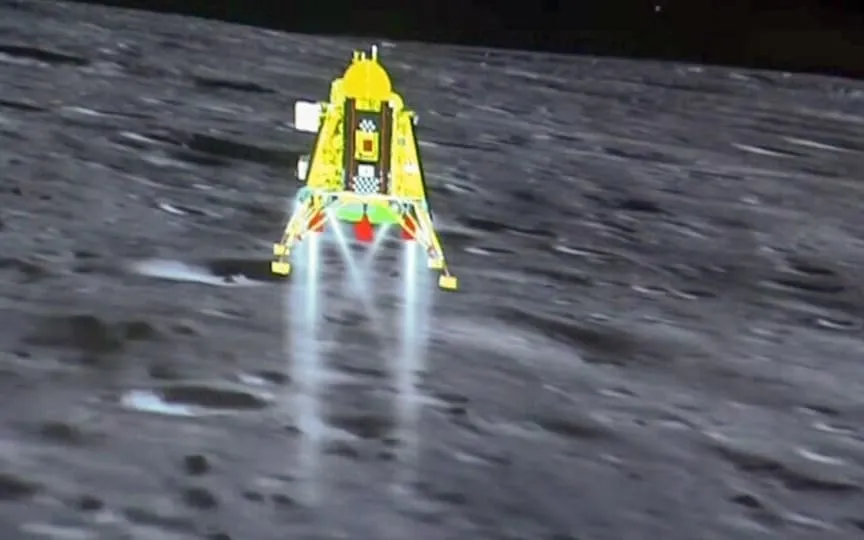Chandrayaan-3 Successfully Lands on Moon with Indian Technology
After a four-year journey and a heartbreaking setback, India successfully launched the Chandrayaan-3 mission on July 14, 2023. Overcoming the challenges faced by the failed Chandrayaan-2 Landing Module and the recent mishap of Russia’s Luna-25 mission, the Indian spacecraft defied the odds and achieved its goal. As a result, India has become the fourth nation to land on the lunar surface and the first to reach the South Pole of the Moon. These accomplishments were made possible by the strategic technological advancements implemented by the Indian Space Research Organization (ISRO).
The emotional release was quite evident, as can be gauged from ISRO’s latest tweet which said, “India, I reached my destination and so did you! Chandrayaan-3 has successfully landed softly on the moon. Just four years ago, in 2019, we saw the same space agency doing a heart-wrenching announcement that it did not reach the moon.At that time, no one believed that India could make a comeback in such a short time and settle on the surface of the moon.
Lessons learned from Chandrayaan-2
To understand the technical upgrades, we first need to revisit what went wrong with the Chandrayaan-2 mission. The first Moon landing mission started off great, but the problem came in the last phase of the mission, when the lander and rover had to reach the surface of the Moon. On September 6, 2019, the counter deviated from the flight path. According to reports, it was said to be a software glitch that increased the thrust of the lander’s five propulsion modules and caused the crash.
Although on the surface the problem was limited to the control of the propulsion system, in reality it was caused by a number of different things, such as the loss of communication, the fail-safe mechanism of the propulsion engines, the selection of a very small zone for landing, and more.
Technical updates that landed Chandrayaan-3 on the Moon
Ahead of Chandrayaan-3’s launch date, ISRO chief S Somnath said at a press conference, “Instead of planning for success in Chandrayaan-2, we are planning for failure in Chandrayaan-3 – looking at what can go wrong and how to deal with it.”
And it did just that. More fuel was added to the counter this time. This likely helped it stay afloat longer and find alternative landing sites if necessary. In addition, the lander could abort the landing attempt if something went wrong and try again after stabilizing its propellers. The power of the propellers was also improved, so even if a couple of them failed, the rest could still stabilize and complete the landing. In addition, the number of propellers was reduced from five to four.
This time, ISRO also chose a larger landing site of 4 km x 2.4 km instead of 500 square meters last time. The larger area was chosen to give the Chandrayaan-3 team more leeway in planning the landing.
Finally, more solar panels were added to the structure of the landing module and its legs were strengthened to absorb the shocks caused by the landing.
The ISRO chief was so confident of the upgrades that he said before the landing, “If all the sensors fail, if everything fails, the landing will still succeed if the propulsion system works well. That’s how it’s designed. Even if two of the engines don’t work this time, the lander will be able to land .It’s designed in such a way that it should be able to handle multiple faults.If the algorithms work well, we should be able to land vertically.
The role of artificial intelligence in the landing of Chandrayaan-3
This time, ISRO also utilized the help of artificial intelligence in the final phase of the landing, called the Autonomous Landing Sequence (ALS). During this phase, the spacecraft left its pre-landing orbit on the Moon and began moving toward the surface, adjusting its direction, heading and speed – all done by artificial intelligence. Throughout this phase, which lasted 17 minutes, the AI carefully made altitude adjustments, fired the thrusters and scanned the surface for obstacles.
Now that the Lander has reached the Moon’s surface, the Pragyan rover will begin exploring the surface and collecting data about the atmosphere. The Vikram lander will collect data on the Earth’s crust and mantle.




